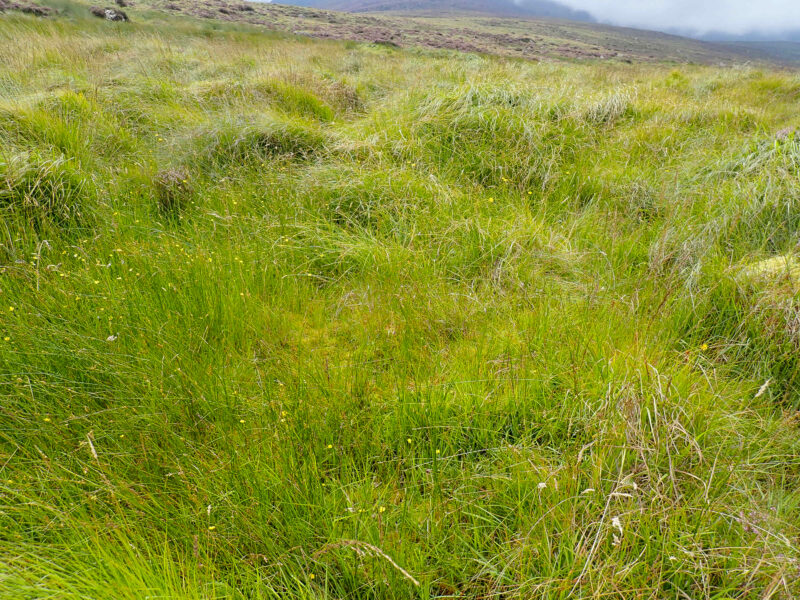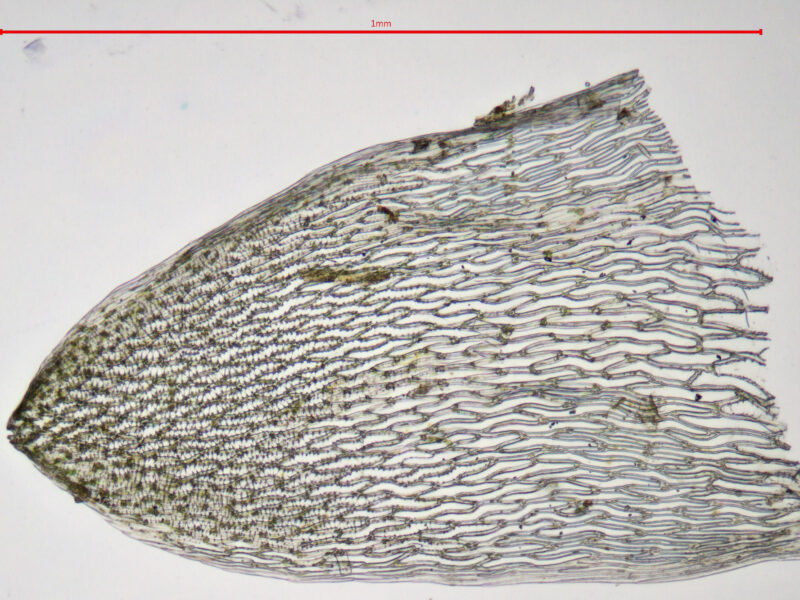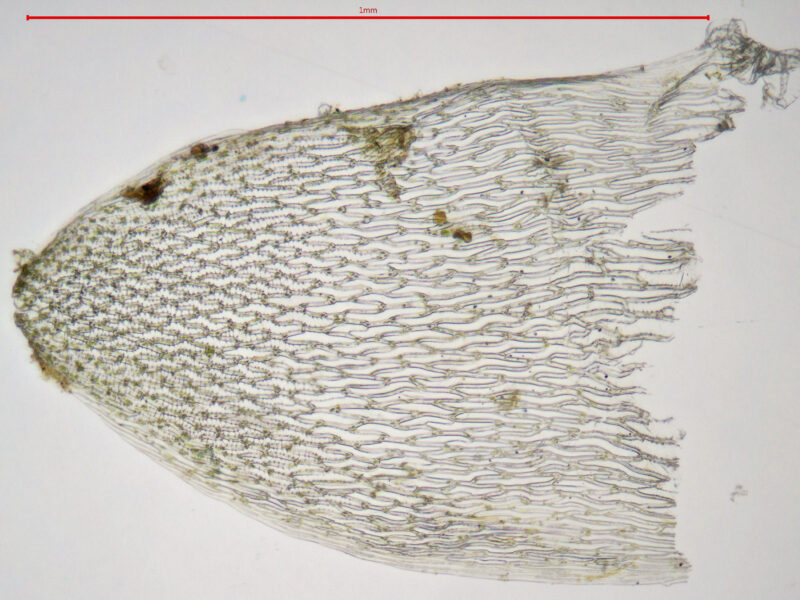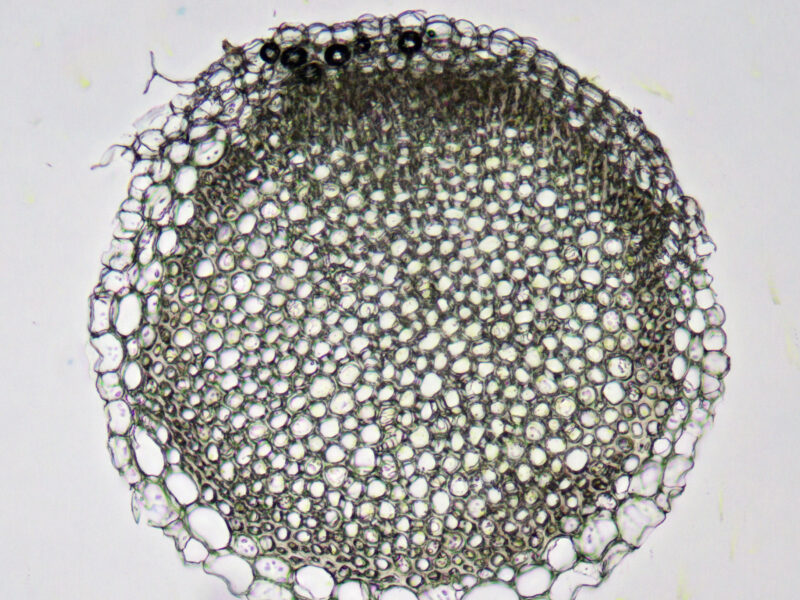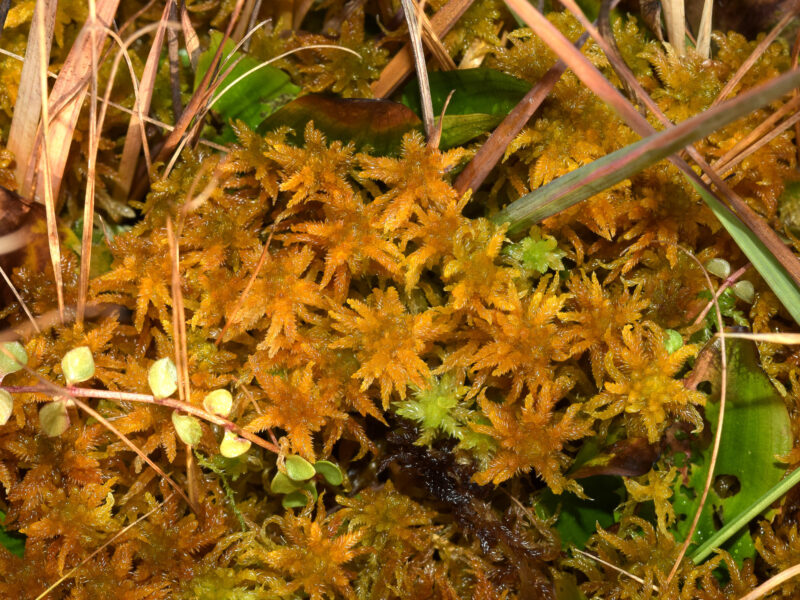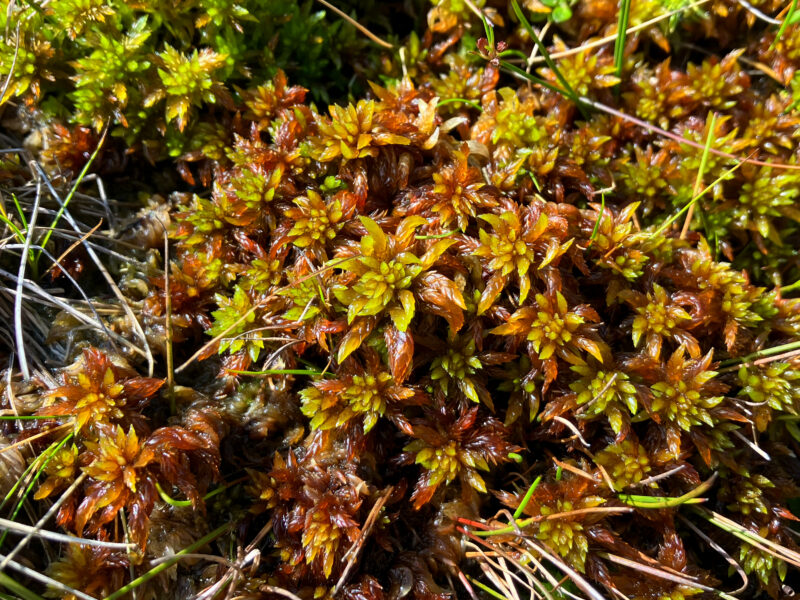Identification notes
S. contortum frequently grows among grasses, sedges and rushes in species-rich wet habitat and scattered shoots are easy to overlook. However, pick a shoot out and it nearly always has curved spreading capitulum branches typical of the five species in Sphagnum Section Subsecundum (the others are S. auriculatum, S. inundatum, S. subsecundum and S. platyphyllum). It is one of the most base-demanding Sphagnum species and it is found in flushes and rich fen with water of high pH where there is little or no nutrient enrichment. It’s always worth looking for other base-demanding species e.g. S. teres and S. warnstorfii in habitats supporting S. contortum. Other associates might include Campylium stellatum, Scorpidium revolvens, S. scorpioides and Carex pulicaris.
S. contortum is usually pale in colour – think apricot, ochre, flesh or even beige (though, as always with Sphagnum, beware poorly-coloured shade forms). In the field, look at its stem – it is generally also pale (in well-illuminated plants, anyway). In the capitulum, the branches typically have asymmetrical leaves that make the plants look prickly. Microscopically, one of the best confirmatory characters of S. contortum is the stem cortex of 2-3 layers of cells.
Read the Field Guide account
